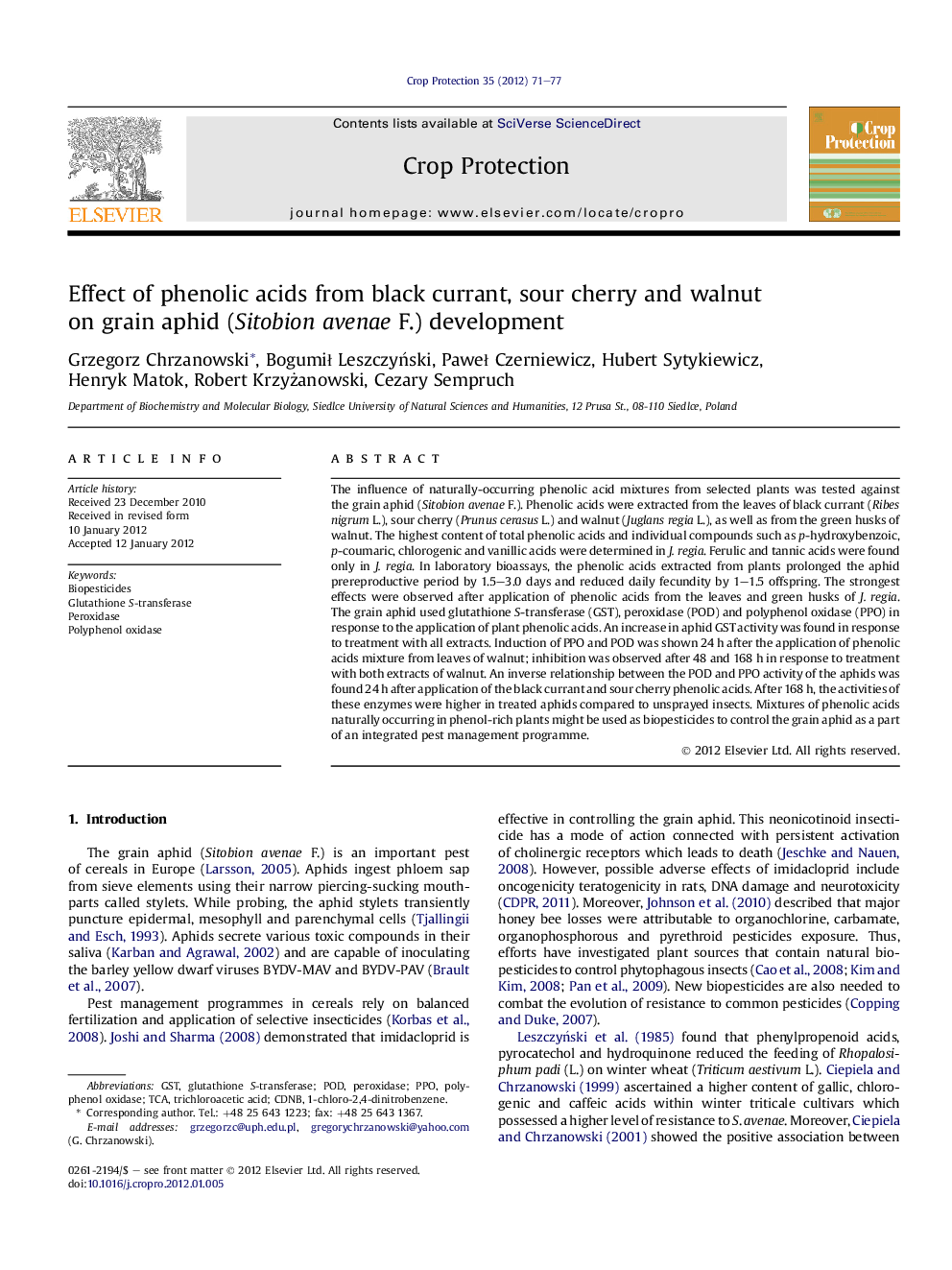| کد مقاله | کد نشریه | سال انتشار | مقاله انگلیسی | نسخه تمام متن |
|---|---|---|---|---|
| 4506520 | 1624352 | 2012 | 7 صفحه PDF | دانلود رایگان |

The influence of naturally-occurring phenolic acid mixtures from selected plants was tested against the grain aphid (Sitobion avenae F.). Phenolic acids were extracted from the leaves of black currant (Ribes nigrum L.), sour cherry (Prunus cerasus L.) and walnut (Juglans regia L.), as well as from the green husks of walnut. The highest content of total phenolic acids and individual compounds such as p-hydroxybenzoic, p-coumaric, chlorogenic and vanillic acids were determined in J. regia. Ferulic and tannic acids were found only in J. regia. In laboratory bioassays, the phenolic acids extracted from plants prolonged the aphid prereproductive period by 1.5–3.0 days and reduced daily fecundity by 1–1.5 offspring. The strongest effects were observed after application of phenolic acids from the leaves and green husks of J. regia. The grain aphid used glutathione S-transferase (GST), peroxidase (POD) and polyphenol oxidase (PPO) in response to the application of plant phenolic acids. An increase in aphid GST activity was found in response to treatment with all extracts. Induction of PPO and POD was shown 24 h after the application of phenolic acids mixture from leaves of walnut; inhibition was observed after 48 and 168 h in response to treatment with both extracts of walnut. An inverse relationship between the POD and PPO activity of the aphids was found 24 h after application of the black currant and sour cherry phenolic acids. After 168 h, the activities of these enzymes were higher in treated aphids compared to unsprayed insects. Mixtures of phenolic acids naturally occurring in phenol-rich plants might be used as biopesticides to control the grain aphid as a part of an integrated pest management programme.
► Phenolic acids occurring in phenol-rich plants might be used as biopesticides.
► GST and PPO are biochemical markers of Sitobion avenae response to biopesticides.
► Grain aphid polyphenol oxidase is the major enzyme which oxidises phenolic acids.
► The aphid peroxidase complements the action of polyphenol oxidase.
Journal: Crop Protection - Volume 35, May 2012, Pages 71–77